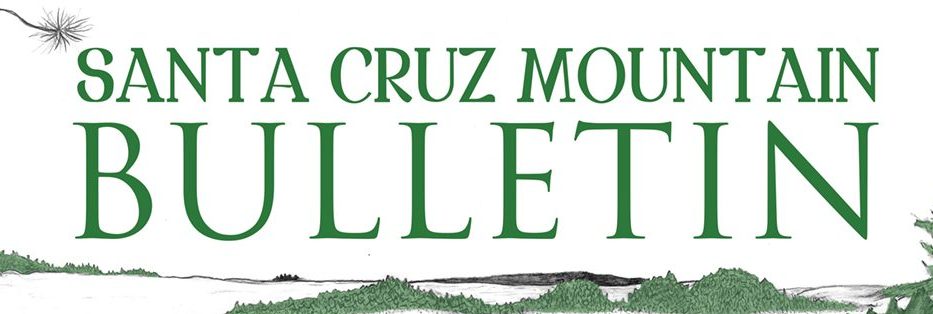Mark Dolson
New Interim General Manager, Routine Business, November Election
The most recent regular San Lorenzo Valley Water District (SLVWD) Board meeting was on October 17. There was also a very brief Special Board meeting on October 22. Both meetings were entirely devoted to routine business, but there was an important announcement at the October 17 meeting.
New Interim General Manager
It was announced that, after interviewing a few different candidates for the Interim General Manager position that has been vacant since July, the Board had selected John Kunkel to fill this position beginning October 28. Vice President Smolley explained that the Board was not considering John as a candidate for the permanent General Manager position. Rather, they were seeking his help to find a permanent general manager. He said the District already has staff that is very competent in operating a water system, and John’s contribution will come from his management experience.
John Kunkel briefly introduced himself via Zoom due to a prior out-of-state commitment. He mentioned that he served 19 years as chief of police for the city of Exeter in California and later became its City Manager. He went on to become city manager for the cities of Kerman and Buellton and interim city manager for the cities of Manzanita, Oregon, and Huron in Fresno County. He stated that he and his wife had found a residence near the District office and were planning to move in shortly. John added that he looked forward to working with the Board and staff, and he wanted everyone to know that he had an open-door policy that applies to board members, staff, and citizens: he encouraged anyone to drop in and see him anytime he was in the office.
Other Business
The remainder of the October 17 meeting was devoted to quarterly reports, a routine agreement for a service line to a new customer, and a contract for the required environmental review along the path of the planned replacement for the 5-mile pipeline destroyed in the CZU Fire. The replacement plan itself has yet to be finalized, but the first phase of this project will involve the removal of hazardous trees (which pose a danger both to workers and to the future pipeline). In August 2024, the District completed an extensive tree survey and identified about 750 trees as hazardous and requiring removal.
The District is pursuing a contract with the California Conservation Corps (CCC) to complete the hazardous tree removal. The CCC has grant funding to provide a crew, which would deliver an estimated $390,000 of labor to the District. The grant-funded crew is booked on a first-come, first-served basis, so moving quickly with the environmental review will allow the District to schedule the crew.
Seven bids were received for three key activities: (1) develop a plan for obtaining California Environmental Quality Act (CEQA) permitting, (2) prepare CEQA and FEMA documents and permitting, and (3) coordinate and consult with the appropriate regulatory agencies. Harris & Associates, Inc. had the lowest bid of $90,000 and received the highest proposal score due to their thorough understanding of the scope of services, efficiency of budget and schedule, and experience with similar projects. The Board unanimously approved this contract award.
The October 22 meeting was convened so that the Board could provide time-critical approval for a contract with Granite Construction Company to adjust existing water valve boxes along a section of Highway 9 that Caltrans was about to begin repaving. Granite submitted the lowest bid of $189,430, and the Board unanimously approved the contract.
November Election
The results of the November election will not be known until after this article goes to press, but regardless of what these results may be, we can all benefit from reflecting on the experiences of the past few months. First, four candidates were running for two open Board seats. However, in this particular race, two of the candidates were obviously highly qualified and were currently serving responsibly as appointed Board members. In contrast, a third candidate stated that his primary commitment was to Measure U, and he wasn’t even sure that he wanted to be on the Board, while a fourth candidate implausibly portrayed himself as the second-most qualified person in the world and confidently denied the existence of global climate change. At a minimum, votes for these latter two candidates raise provocative questions about how well-informed voters were and what was most important to them.
Second, the appearance of Measure U on the ballot should give all of us pause. Measure U was portrayed by its proponents as an exercise in grassroots democracy, but the reality is that the vast majority of voters remained either uninformed or confused about what Measure U would actually do. Proponents claimed that Measure U would simply enable a harmless “do-over” for the recent rate increase in order to make it more “fair” and more encouraging of conservation. These were highly misleading claims: the current rate structure is equitable, promotes conservation, and was the result of a lengthy, deliberative process with multiple opportunities for community input and review. Measure U would cost the district at least $1 million in revenue while a new rate structure is developed (with no guarantee of being approved), delaying essential repairs and upgrades. Measure U also contained a little-understood “poison pill” that would commit the District to a 25-year policy of structuring its rates contrary to all available expert guidance (and against the best judgment of the current Board). Measure U was an unfortunate, divisive distraction from the critical work ahead for our locally-owned water system.
The next regularly scheduled public meeting of the Board of Directors will be on November 7 at 6:30 PM.


